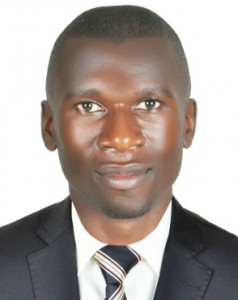The safeguarding principles for equitable access to medicines embraced by the WHO and the UN system as a whole are under attack and watered down now that the stranglehold of neoliberal policies is mushrooming worldwide. In this context, some WHO Member States disappointingly run contrary to WHO directions while placing corporate interests and for-profit policies before people right to the equitable access to health

By Daniele Dionisio
PEAH – Policies for Equitable Access to Health
Will Ever WHO’s Roadmap for Medicines Move into Action?
The Threat of Neoliberal Policies, Corporate Interests Collusion
A preliminary draft of the 2019-2023 Roadmap for Access to Medicines was just released by WHO amidst consultation with Member States and an informal discussion with stakeholders on 10-11 September, including a presentation to which a number of stakeholders provided comments. An online survey had already been carried out from 9 July to 31 August, to which some 56 countries secured answers.
As a follow-up to the WHO report on ‘Addressing the global shortage of, and access to, medicines and vaccines’ presented at the 71st World Health Assembly (WHA) in May, the draft roadmap included a list of 10 activity areas to be addressed during 2019-2023.
A revised draft will predictably be delivered in December, and then submitted to the WHO Executive Board meeting in January, and to the WHA in May 2019.
As such, while no conclusion is in the offing, there’s still a long way to go , as you’d expect also in the light of an appendix to the draft roadmap enlisting ‘KEY RESOLUTIONS OF THE HEALTH ASSEMBLY AND REGIONAL COMMITTEES, AND REGIONAL COMMITTEE DOCUMENTS FROM THE PAST 10 YEARS RELEVANT TO ACCESS TO SAFE, EFFECTIVE AND QUALITY MEDICINES, VACCINES AND HEALTH PRODUCTS’.
Heard correctly: ten years (without counting the ‘hard slog’ globally in the field the Agency has been engaging in since long before)!
Admittedly, if this year’s WHA seems to have delivered on its goals, one could infer, however, that deeply-routed conflicting issues across countries have undermined the outcomes of WHO efforts. This comes as no surprise in today’s world, as highlighted below in this editorial aimed at hammering awareness home that the safeguarding principles for equitable access to medicines embraced by the Agency and the UN system as a whole are under attack and watered down now that the stranglehold of neoliberal policies is mushrooming worldwide. In this context, some WHO Member States disappointingly run contrary to WHO directions while placing corporate interests and for-profit policies before people right to the equitable access to health.
The key to WHO functioning and success relies heavily on deep collaboration and sustainable financial support from Member States. Unfortunately, while this is not the case with the United States (US), all the more in Trump era, neither is it with the European Union (EU).
Indeed, while relying on established synergies with WHO, the EU seemingly lacks adequate coordination and collaboration with the Agency. Worse, a number of EU recent political choices run against WHO principles for fair access to medicines (these are meant in alignment with the WTO Agreement on Trade-Related Aspects of Intellectual Property Rights - TRIPS , and include facilitating the issuance of compulsory licences, rejecting the so-called evergreening of patents, restricting patents to genuine inventions only, and refraining from patent term extensions).
As would be the case of EU Regulation EC 469/2009 concerning the supplementary protection certificate (SPC) mechanism for medicinal products. Such an extended monopoly protection beyond new medicines’ 20-year patent term has undermined access to affordable generic drugs and biosimilars in Europe and led to unbearably spiralling prices of medicines for HIV/ AIDS, cancer and hepatitis C treatment. In a nutshell, by stifling generic competition, SPCs still keep up extortionate drug prices while exhausting earmarked national budgets for health and depriving patients of equitable access to lifesaving treatments.
Coupling with insights so far, other circumstances add to the matter of Member States and concerned parties insufficient collaboration with WHO.
Relevantly, what happened to the requests laid down a couple of years ago by the United Nations High Level Panel on Access to Medicines in their final report serving as a cornerstone, under the UN 2030 Agenda perspective, for all decisions regarding non-discriminatory access to treatments and care – and not just at a poor country level?
Among other recommendations, the report urged to begin negotiations at the WHO for a binding research and development treaty up to delinking R&D costs from the end prices of medicines (as a proposal backed in a report released in 2012 by the WHO established Consultative Expert Working Group-CEWG).
The Panel’s report contended that ‘Governments should require manufacturers and distributors of health technologies to disclose to drug regulatory and procurement authorities information pertaining to:
(1) the costs of R&D, production, marketing and distribution of health technology being procured or given marketing approval with each expense category separated; and (2) any public funding received in the development of the health technology, including tax credits, subsidies and grants.’
It maintained that ‘Governments and the private sector must refrain from explicit or implicit threats, tactics or strategies that undermine the right of WTO Members to use TRIPS flexibilities’, while calling on governments engaged in international trade and investment negotiations to ensure that these do not include clauses contrary to their obligations to the right to health.
Moreover, the report insisted that ‘Governments should strengthen national level policy and institutional coherence between trade and intellectual property, the right to health and public health objectives by establishing national inter-ministerial bodies to coordinate laws, policies and practices that may impact on health technology innovation and access.’
The success rate of Panel’s meaningful recommendations is hard bet in these times of rampant neoliberal globalization underpinning unfettered trade liberalization, meaning collusion between national-transnational corporations and their political counterparts. As maintained by AE Byrn, Y Pillay and TH Holtz in their Textbook of Global Health (2017 edition, Oxford University press): ‘..the exigencies of market competition and enormous corporate power mean that governments privilege economic priorities and corporate interests over social and environmental needs, even in settings where democratic institutions and decision-making processes are marked by integrity and representativeness….’
Inherently, as reported elsewhere, ‘In the contemporary policy environment, one element in particular connects health inequalities around the world: Neoliberalism as a set of norms that guide and justify policy, ultimately equating financial worth with moral worth. The connections are not only conceptual of course; they are also material and institutional, operating through such channels as campaign money, capital flight and the networks of power and privilege epitomised by the World Economic Forum, where the global super-elite meet to worry about the threat posed to their fortunes by the rest of us’.
Not to mention that in today’s global landscape, which is torn by misalignment, litigations and frictions among the involved parties, governments look like they won’t be ready to embark on these recommendations as an opportunity to advance public health over political and commercial interests.
As such, no wonder the Panel’s report has received strong push-back from powerful nations even as governments’ directions and trade agreements, largely instigated by the EU and the US, run contrary to the Panel’s principles while turning governments’ agendas into policies that protect monopolistic interests.
As regards the points above, the EU has been keen on undermining any progress on the R&D treaty mentioned before. On the same wavelength, the Panel’s request for cost transparency to help curb extortionate drug prices looks like a difficult task at a time when pharma companies and their allies are lobbying policy decision makers to scupper any rules that would force them to disclose the real R&D costs and profits of their medicines and the rationale for charging what they do. As such, no surprise that the report was opposed by the US Chamber of Commerce and the pharmaceutical industry.
All highlights here add to many debated questions because of their actual potential to negatively affect health and worsen inequalities in access to care and treatments. Just few examples:
– The credit policies of International Monetary Fund, World Bank and European Commission still incur criticism of indirectly stifling public spending, including for health, in the borrowing countries. As reported ‘… Conditionalities attached to loans from the World Bank and IMF were among the key negative influences on health and its social determinants between 1980 and 2000 in many of the more than 75 low- and middle-income countries in which they were applied. Best available evidence suggests that this ‘neoliberal epidemics’ era is not over. In the future, neoliberalism is likely to reflect the erosion of territorial divisions between core and periphery, or the global North and the global South, in the world economy…’
– Unbridled TRIPS-plus measures still enforce intellectual property (IP) protection beyond what is required by the WTO TRIPS agreement. These measures encompass making it easier to patent new forms of old medicines that offer no added therapeutic benefit for patients (the so-called ‘ever-greening’); restricting ‘pre-grant opposition’, which allows a patent to be challenged before it is being granted; allowing customs officials to impound shipments of drugs on mere suspicion of IP infringement, including ‘in transit’ products that are legal in origin and destination countries; expanding data exclusivity beyond WTO’s request for data protection against unfair commercial use only; extending patent lengths beyond 20-year TRIPS requirements; and preventing drug regulatory authorities from approving new drugs if they might infringe existing patents.
– Investor state dispute settlement (ISDS) provisions are in the crosshairs now that most currently-being negotiated or finalized trade agreements are charged with introducing ISDS clauses whereby many forms of government regulations, including TRIPS-compliant price cuts of medicines, could be sued by the patent owners for making pointless or eroding their expectations.
These circumstances bode ill at a time when the US administration is lobbied by the pharmaceutical corporations, European authorities are doing almost nothing to check the tide of ‘me-too’ drugs, and the European Medicines Agency keeps testing new medicines only in terms of safety and efficacy compared with a ‘pretend’ drug. And this occurs even as a WHO strapped for public financing sees its role thwarted by a number of international bodies and private donors resulting in overlapping/duplication of initiatives and undue pressure towards earmarked programs.
In such context, WHO Member States around the world should really put into practice what the EU Commission envisaged (alas, just in words?) some years ago ‘At global level, the EU should endeavour to defend a single position within the UN agencies. The EU should work to cut duplication and fragmentation and to increase coordination and effectiveness of the UN system. It should support stronger leadership by the WHO in its normative and guidance functions to improve global health. The EU should seek synergies with WHO to address global health challenges. It should decrease the fragmentation of funding to WHO and gradually shift to fund its general budget.’






